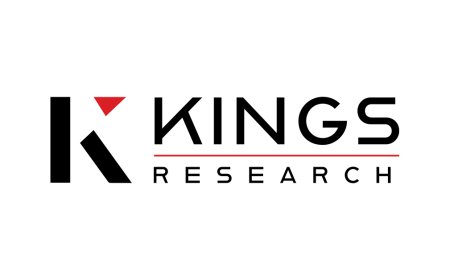Mastering Quality: Unlocking Success with ISO 9001 Certification
ISO 9001 certification refers to the internationally recognized standard that outlines the requirements for a quality management system (QMS) within an organization.
Introduction
A. Definition of ISO 9001 certification
ISO 9001 certification refers to the internationally recognized standard that outlines the requirements for a quality management system (QMS) within an organization. It signifies that the organization has implemented processes and systems to ensure consistent quality in its products or services.
B. Importance of obtaining ISO 9001 certification
Obtaining ISO 9001 certification is crucial for organizations aiming to demonstrate their ability to consistently provide products and services that meet customer and regulatory requirements. It enhances customer confidence and satisfaction, improves processes, and provides a framework for continual improvement and operational efficiency.
C. Benefits of ISO 9001 certification
ISO 9001 certification offers several benefits, including enhanced marketability and competitiveness, reduced costs through improved efficiency, better management of business risks, and increased customer satisfaction and loyalty.
Implementing ISO 9001 Certification in Your Organization
Implementing ISO 9001 certification involves several key steps to ensure your organization meets international standards for quality management. This section outlines the essential components and actions required to successfully achieve ISO 9001 certification.
A. Getting Buy-In from Management and Employees
Before embarking on the journey towards ISO 9001 certification, obtaining commitment from both management and employees is crucial. This step involves:
- Educating Leadership: Communicate the benefits of ISO 9001 certification, such as improved efficiency, customer satisfaction, and market competitiveness.
- Allocating Resources: Ensure adequate resources, including time, budget, and personnel, are allocated to the certification process.
- Building Awareness: Conduct workshops or training sessions to raise awareness about ISO 9001 requirements and the importance of quality management.
B. Identifying and Documenting Processes and Procedures
Clear identification and documentation of processes and procedures are fundamental to ISO 9001 compliance. This phase includes:
- Process Mapping: Identify all key processes within your organization that impact quality.
- Document Control: Establish a system for creating, updating, and controlling documents and records to ensure consistency and compliance with ISO 9001 standards.
- Risk Assessment: Conduct risk assessments to identify potential areas of non-conformance and develop mitigation strategies.
C. Developing a Quality Management System
Developing a robust Quality Management System (QMS) forms the backbone of ISO 9001 certification. This involves:
- Quality Policy and Objectives: Define a clear quality policy aligned with organizational goals and establish measurable objectives.
- Procedure Development: Create procedures that outline how processes are conducted to meet quality objectives.
- Implementation Planning: Develop an implementation plan detailing timelines, responsibilities, and milestones for achieving ISO 9001 certification.
D. Conducting Internal Audits and Management Reviews
Internal audits and management reviews ensure ongoing compliance and improvement within your QMS. Key activities include:
- Internal Audits: Schedule and conduct regular internal audits to assess conformity with ISO 9001 requirements and identify opportunities for improvement.
- Management Reviews: Hold periodic management reviews to evaluate the performance of the QMS, review audit results, and make necessary adjustments to policies and procedures.
Maintaining ISO 9001 Certification
Once your organization has achieved ISO 9001 certification, maintaining it requires ongoing diligence and commitment to continuous improvement. This section outlines essential practices for effectively maintaining ISO 9001 certification.
A. Monitoring and Measuring Performance
Monitoring and measuring performance are critical to ensuring the effectiveness of your Quality Management System (QMS) and meeting ISO 9001 requirements. Key activities include:
- Performance Indicators: Define and monitor key performance indicators (KPIs) relevant to quality objectives and processes.
- Data Collection: Collect and analyze data to assess performance against targets and identify areas needing improvement.
- Management Review: Conduct regular management reviews to evaluate QMS performance, review KPI results, and make data-driven decisions for improvement.
B. Updating and Improving the Quality Management System
Continuous improvement is integral to maintaining ISO 9001 certification. This involves:
- Process Reviews: Periodically review documented processes and procedures to ensure they remain effective and compliant with ISO 9001 standards.
- Feedback Mechanisms: Establish mechanisms for capturing feedback from customers, employees, and stakeholders to identify opportunities for improvement.
- Innovation: Encourage innovation and the adoption of best practices to enhance efficiency, product quality, and customer satisfaction.
C. Addressing Non-Conformities and Taking Corrective Actions
Addressing non-conformities promptly and effectively is crucial to maintaining ISO 9001 certification. Steps include:
- Non-Conformance Identification: Identify and document instances of non-conformance through internal audits, customer feedback, or other means.
- Root Cause Analysis: Conduct thorough root cause analysis to determine the underlying reasons for non-conformities.
- Corrective Actions: Develop and implement corrective actions to address root causes, prevent recurrence, and improve processes.
- Verification: Verify the effectiveness of corrective actions through follow-up and monitoring.
D. Renewing and Recertifying ISO 9001 Certification
ISO 9001 certification typically requires renewal every three years to ensure ongoing compliance and effectiveness. Steps involved in renewing certification include:
- Preparation: Prepare for recertification by reviewing documented procedures, conducting internal audits, and addressing any outstanding non-conformities.
- External Audit: Undergo an external audit conducted by a certification body to verify compliance with ISO 9001 requirements.
- Continuous Improvement: Demonstrate continual improvement in QMS effectiveness and performance metrics during the recertification process.
By consistently applying these practices, organizations can successfully maintain ISO 9001 certification, demonstrating their commitment to quality management, customer satisfaction, and continual improvement. Maintaining ISO 9001 not only enhances organizational credibility but also reinforces competitiveness in the global marketplace.
Conclusion
Implementing ISO 9001 certification can significantly benefit organizations by establishing robust quality management systems that enhance efficiency, customer satisfaction, and competitiveness. This conclusion summarizes key points, encourages pursuit of ISO 9001 certification, and provides resources for further information.
A. Summary of Key Points
Throughout this guide, we've explored the essential steps involved in implementing and maintaining ISO 9001 certification:
- Getting Buy-In: Securing commitment from management and employees to support ISO 9001 implementation.
- Process Documentation: Identifying, documenting, and controlling key processes and procedures.
- Quality Management System Development: Establishing a comprehensive QMS aligned with ISO 9001 requirements.
- Internal Audits and Management Reviews: Conducting regular audits and reviews to ensure ongoing compliance and improvement.
- Maintaining Certification: Monitoring performance, addressing non-conformities, and continually improving the QMS.
B. Encouragement for Organizations to Pursue ISO 9001 Certification
We strongly encourage organizations to pursue ISO 9001 certification for the following reasons:
- Enhanced Credibility: Certification demonstrates your organization's commitment to quality and customer satisfaction, enhancing credibility and trust among stakeholders.
- Operational Efficiency: Implementing ISO 9001 improves process efficiency, reduces waste, and enhances overall operational performance.
- Market Competitiveness: Certification can provide a competitive edge in global markets by meeting customer requirements and regulatory expectations.
- Continuous Improvement: ISO 9001 promotes a culture of continuous improvement, driving innovation and better business practices.
C. Resources for Further Information on ISO 9001 Certification
For organizations seeking additional guidance and information on ISO 9001 certification, the following resources are recommended:
- ISO Website: Visit the International Organization for Standardization (ISO) website for comprehensive information on ISO 9001 standards and certification processes. ISO Website
- Certification Bodies: Contact accredited certification bodies in your region for specific guidance on achieving and maintaining ISO 9001 certification.
- Industry Associations: Explore industry-specific associations and forums that provide resources, training, and best practices related to ISO 9001 implementation.
- Consultants and Experts: Engage with ISO 9001 consultants and experts who can provide tailored support and assistance throughout the certification journey.
By leveraging these resources and committing to quality management principles outlined in ISO 9001, organizations can achieve sustainable success, drive continual improvement, and meet the evolving expectations of customers and stakeholders.
Implementing ISO 9001 is not just about compliance; it's about fostering a culture of excellence and delivering value to all stakeholders involved.
What's Your Reaction?














![Noots Focus Reviews [Truth Exposed 2025]!](https://news.bangboxonline.com/uploads/images/202501/image_430x256_678e3b94881a1.jpg)
![Vivalis Male Enhancement: The Must-Know Ingredients [2025 Update]](https://news.bangboxonline.com/uploads/images/202501/image_430x256_678e3b54e396c.jpg)








